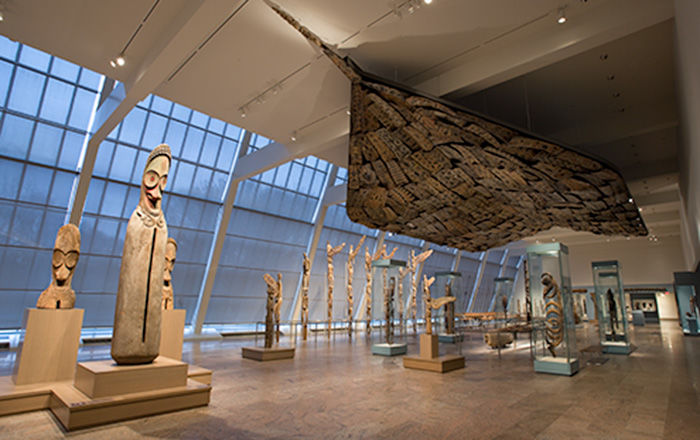Duafe (comb)
Not on view
Elaborate combs called duafe were gifted to Akan women by family members or male partners to commemorate special events, including her transition to puberty, marriage, or motherhood. Alternatively, in rare instances a woman might commission a sculptor to make one for her. The iconography of a duafe comb is incredibly personal, with the individual gifting it often commissioning the artist to reference specific ideas and motifs. Its imagery draws upon an array of patterns related to Akan proverbs and adinkra symbols that convey community ideals and values. While the various symbols might hold meaning individually, the combined effect often communicated a message only legible to the intended recipient.
Among the diverse iconography represented on this duafe is an akua ‘ba, a fertility figure Akan women commission to help them conceive. This practice derives from an Akan legend about a woman named Akua who struggled with infertility. To address her condition, she consulted a priest who advised her to commission the carving of a small wooden child and care for it as she would a living baby, including nursing it and putting it to bed. Despite facing public ridicule from members of her community, her care and dedication to the figure led to a successful pregnancy and the birth of her daughter. This outcome inspired other women to craft similar figures to help them conceive and birth healthy children—a tradition that has continued to this day. The inclusion of an akua ‘ba figure on this duafe suggests that it was given by a husband to his wife, perhaps to underscore their desire for children or to commemorate the success of an akua ‘ba figure.
As a wearable item that enhanced the beauty of its owner, the duafe symbolizes feminine elegance and comportment. It is the ideal comb used when styling a traditional Asante hairstyle known as dansinkran, which involves a unique plaiting technique associated with royal women. These contexts further connect duafe combs with akua ‘maa (plural), as they are also understood as symbols of feminine beauty. The features of akua ‘maa emphasize an Akan feminine ideal for which physical and moral beauty were closely intertwined. In this akua ‘ba figure, the ringed neck references the nourished body of a well-fed individual, and the wide forehead emphasizes wisdom.
Ellie Luchini
Roswell L. Gilpatric MuSe Intern, 2025
This image cannot be enlarged, viewed at full screen, or downloaded.
This artwork is meant to be viewed from right to left. Scroll left to view more.


